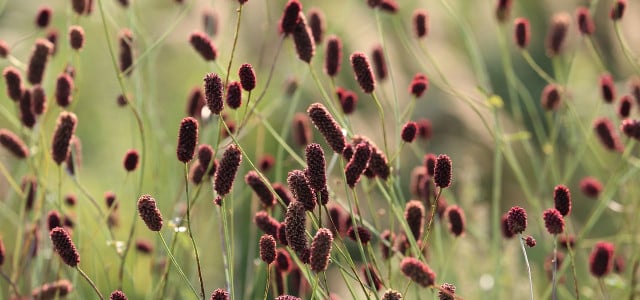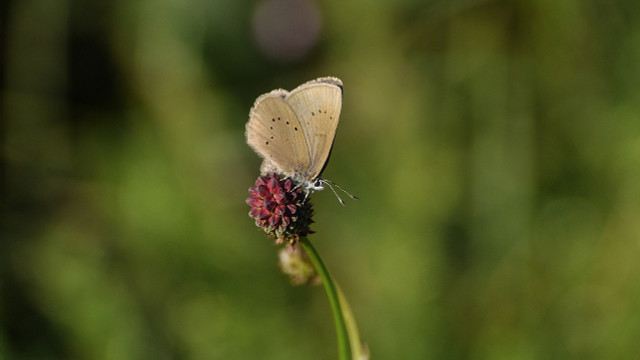
The meadow buttercup is a robust, perennial plant and does well in the home garden. Both the lesser and greater meadow-head are also popular with bees and insects.
The meadow buttercup forms its own genus of plants and belongs to the rose family. The various species grow herbaceously, as perennials or shrubs. Greater meadow-head grows up to 120 centimeters tall and bears small dark red flower heads from June to August. The lesser meadow buttercup, also called burnet, grows to no more than half the height of its larger relative.
In your garden, you can plant both the lesser meadow-head and the greater meadow-head. It is ideal for creating an insect-friendly garden, as it is an important food source for bees and other insects.
Contents
The ideal location for the meadow buttercup
If you want to plant the meadow buttercup in your garden, you must first find a suitable place for it. In their requirements for the location, the greater and lesser meadow-head do not differ too much:
The greater meadow buttercup requires
- Sun to partial shade,
- sandy to loamy soil,
- a neutral to slightly acidic pH value
- and humus-rich, well-drained soil.
The situation is very similar for the lesser meadow-head. It prefers
- a sunny to semi-shady spot,
- gravelly to loamy soil,
- a neutral to slightly alkaline soil
- and humus-rich, well-drained soil.
- Both varieties tolerate calcareous substrate very well.
Planting the greater and lesser meadow buttercup: This is how you do it right
As soon as you have found a suitable place for the meadow buttercup, you can start planting. It makes little difference whether you have chosen the greater or lesser meadow-head: You proceed in a similar way with both plants. The only difference is the distance between the individual plants.
- Meadow buttercup is best sown directly into the bed. The best time for this is between March and June. However, later sowing in August is also possible.
- If you have chosen the lesser meadow buttercup, you should leave about 15 centimeters of space between the rows so that the plants do not get in each other’s way later. For the greater meadow buttercup, about five plants fit in one square meter of soil.
- Press the seeds into the soil and cover them with a layer about two to three centimeters thick.
- The seeds should now germinate within four weeks. Tip: If several seeds have successfully germinated from one planting hole, you still need to separate the young plantlets. To do this, carefully dig them up and replant them about 25 centimeters apart.
Tip: You can pick the leaves of the lesser meadow buttercup as you go and use them in the kitchen. They are delicious in salads, cottage cheese or as a substitute for parsley.
Proper care for greater and lesser meadow-head

Both the lesser and greater meadow buttercup do not require much care. The perennials are hardy and do well without much human attention. The following applies to both:
- Hoe the soil around the plants occasionally so that the soil remains loose and permeable.
- In summer, water the meadow buttercup regularly, but don’t flood it.
- Fertilize between spring and fall with organic fertilizer, such as nettle manure or horn shavings. You can also work some compost into the surrounding soil.
- You can simply cut off dead flowers after the flowering period.


